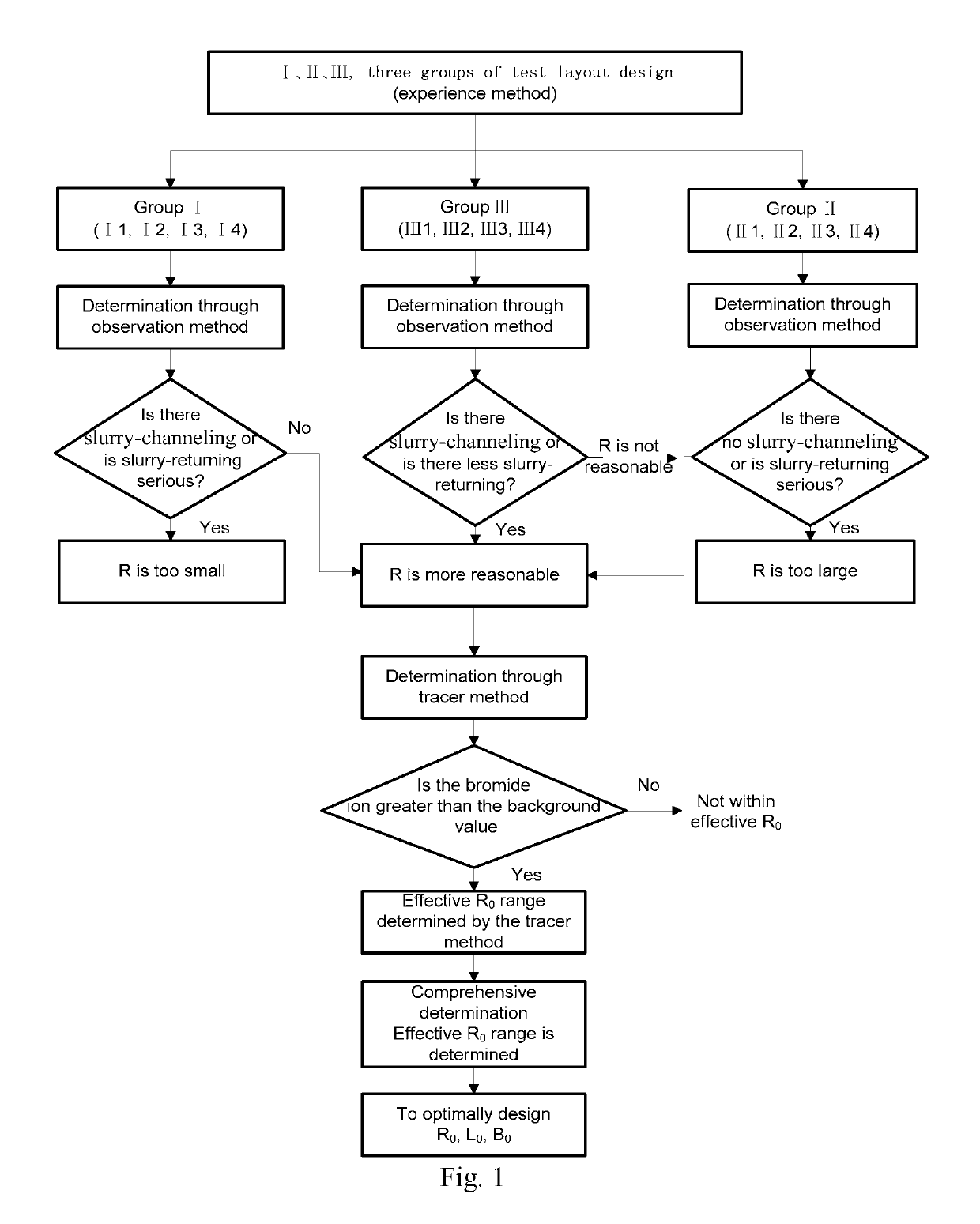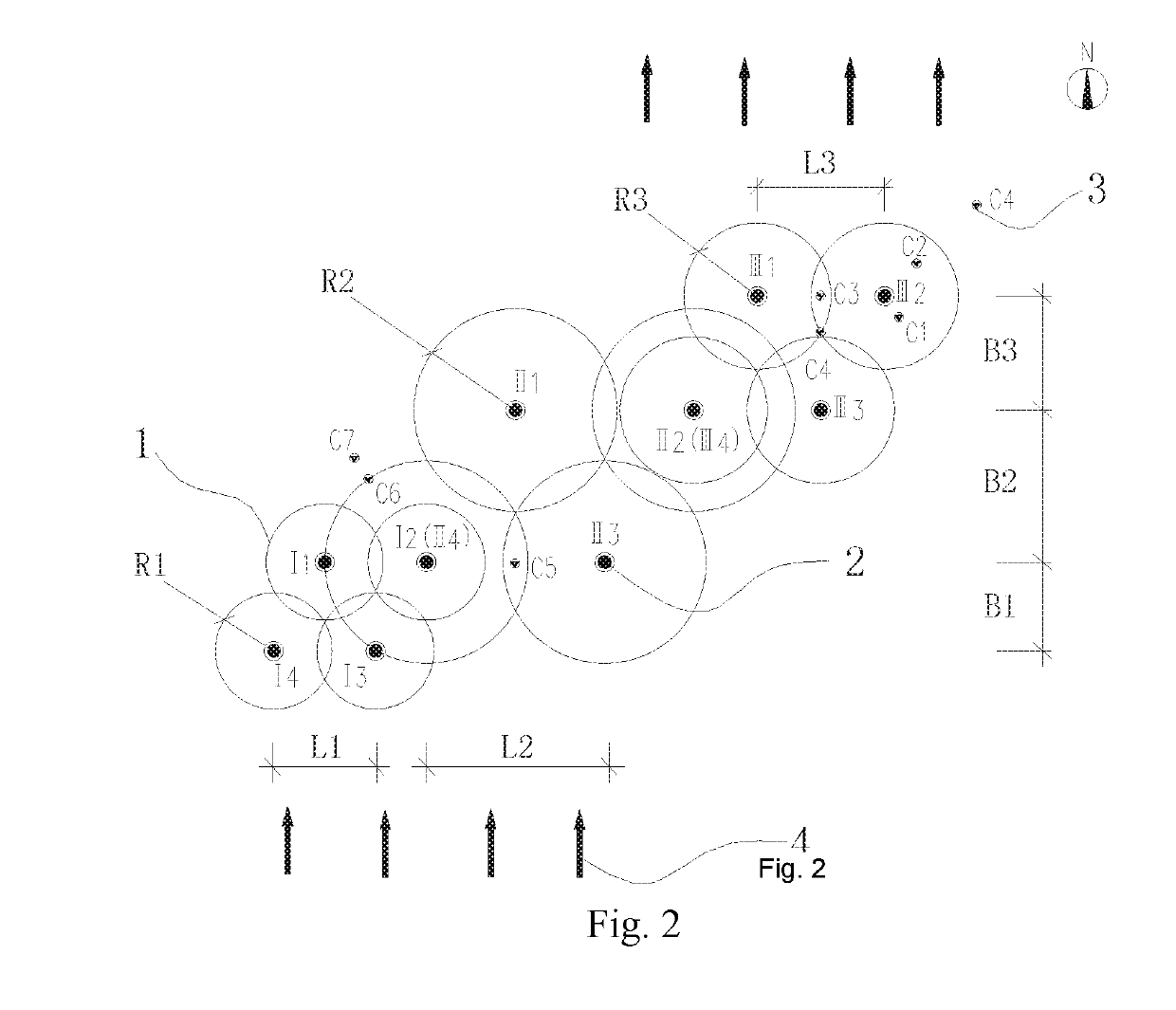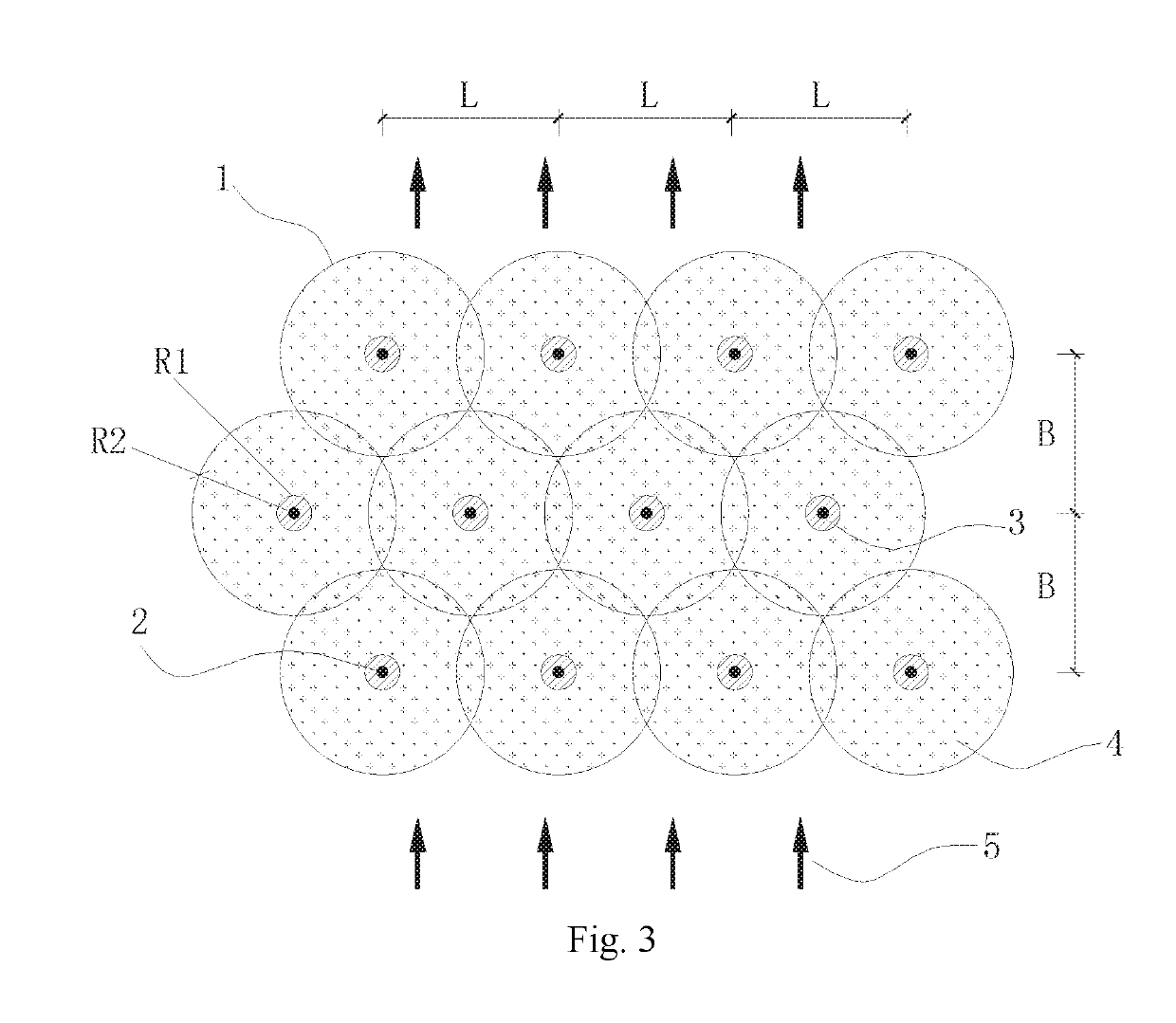Method for determining diffusion radius of in-situ injection and remediation of contaminated soil and groundwater
a technology of diffusion radius and insitu injection, which is applied in the direction of shaft sinking, shaft equipment, instruments, etc., can solve the problems of increasing mechanical cost, affecting the success or failure of remediation projects, and the “dead angle” of remediation, so as to achieve mature and stable technology, low cost, and small disturbance to the formation
- Summary
- Abstract
- Description
- Claims
- Application Information
AI Technical Summary
Benefits of technology
Problems solved by technology
Method used
Image
Examples
embodiment 1
[0069]The present embodiment is an on-site test method for determining the effective diffusion radius of an organic contaminated soil and a groundwater remediation project by using an in-situ chemical oxidation in-situ injection method. The operations not specifically described in the present embodiment are carried out in accordance with the methods already given in the Summary of the Invention.
[0070]This project is a soil and groundwater remediation project of a chemical plant in Nanjing. The maximum remediation depth of the soil in this site is 12 m. There are two layers of silty clay layer and the aquifer is fine sand layer (distributed at 3˜6 m or 4˜7 m). The groundwater is shallow (about 1 m) and rich. The target contaminants in soil and groundwater are VOCs / SVOCs organic substances such as chlorobenzene, benzene, and P / O-nitrochlorobenzene. One of the difficulties in in-situ remediation of this project is the lack of practical experience and design basis for the diffusion radi...
embodiment 2
[0085]As shown in FIGS. 3 and 4, the present embodiment is an optimization process for in-situ injection of remediation holes distribution parameters of soil and groundwater. This is a process for optimizing the holes distribution parameters, based on the factors such as the groundwater flow at the remediation site, the difference in the permeability of the soil layer, and the effective reaction time of the remediation agent, in the case where the effective diffusion radius is obtained in Embodiment 1. Briefly read as follows:
[0086]In Embodiment 1, the recommended values of the effective diffusion radius of two typical soil layers are obtained. R0 for sands (such as fine sand aquifer) is 2.9 m, and R0 for clays (such as silty clay) is 0.9 m. The holes distribution method is a triangle method, and holes distribution method 1 is for sands. Considering the influence of groundwater flow on the row spacing of the holes distribution parameters, the row spacing increases the effective reac...
PUM
| Property | Measurement | Unit |
|---|---|---|
| depth | aaaaa | aaaaa |
| concentration | aaaaa | aaaaa |
| outer diameter | aaaaa | aaaaa |
Abstract
Description
Claims
Application Information
 Login to View More
Login to View More - R&D
- Intellectual Property
- Life Sciences
- Materials
- Tech Scout
- Unparalleled Data Quality
- Higher Quality Content
- 60% Fewer Hallucinations
Browse by: Latest US Patents, China's latest patents, Technical Efficacy Thesaurus, Application Domain, Technology Topic, Popular Technical Reports.
© 2025 PatSnap. All rights reserved.Legal|Privacy policy|Modern Slavery Act Transparency Statement|Sitemap|About US| Contact US: help@patsnap.com



